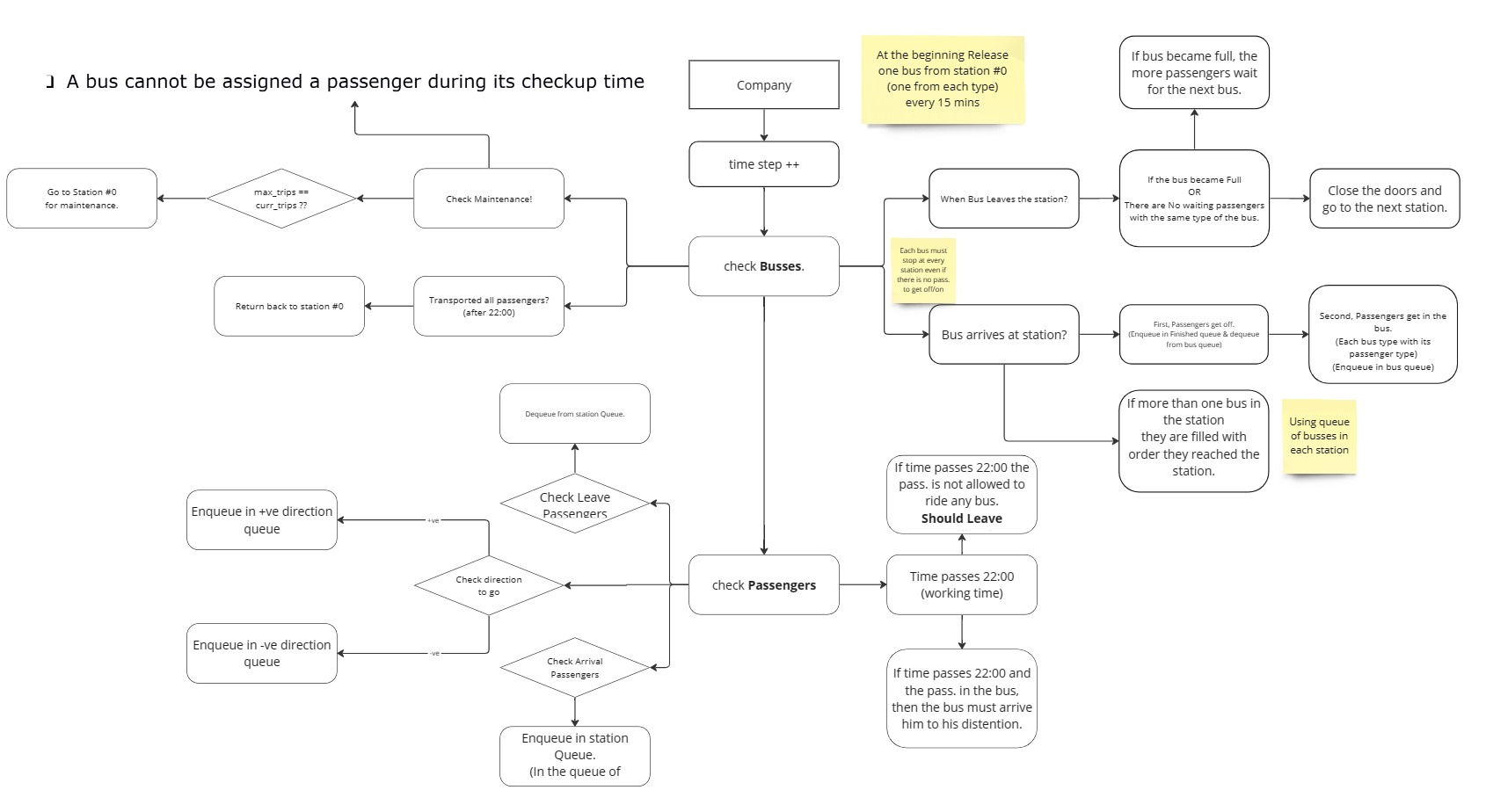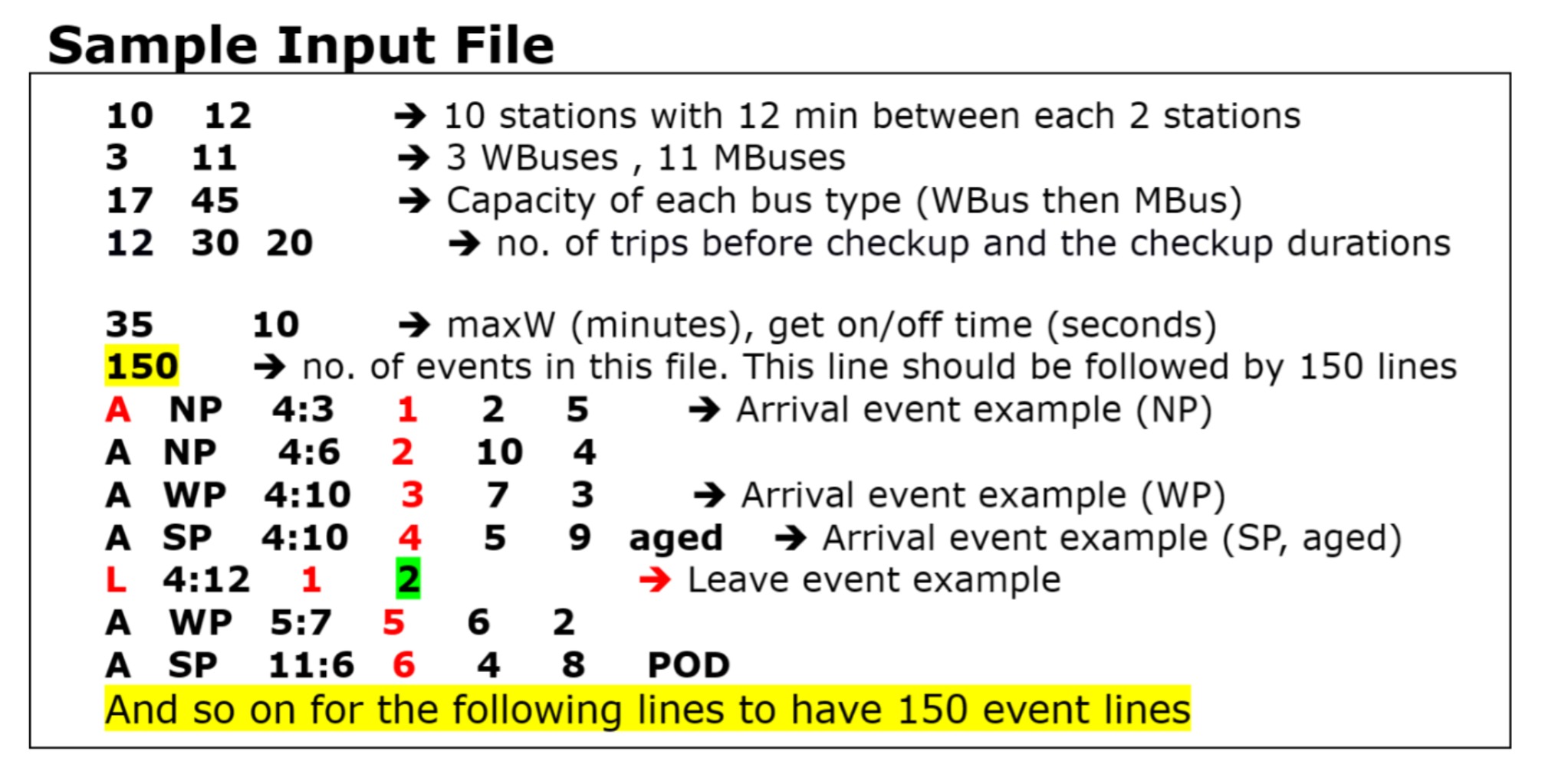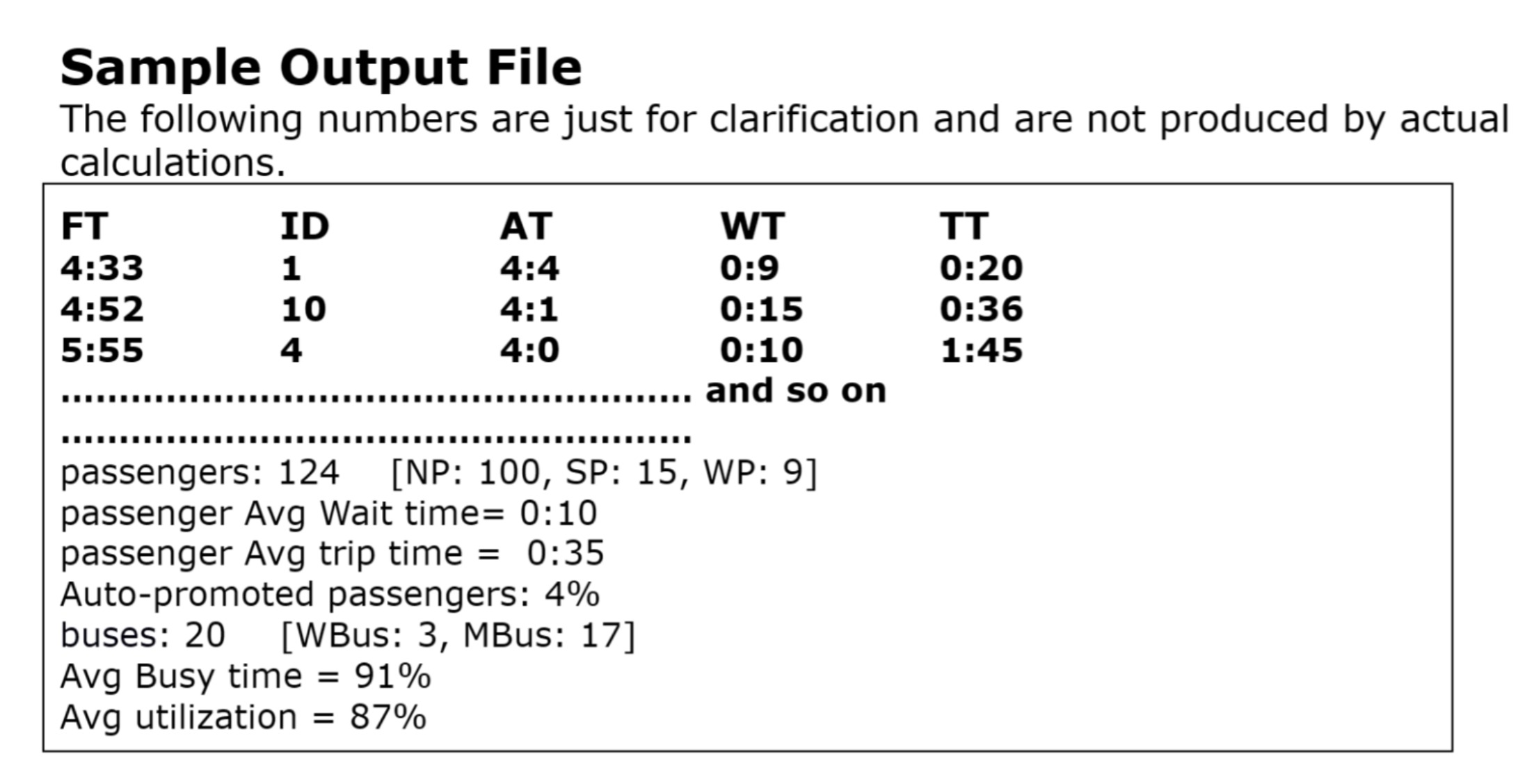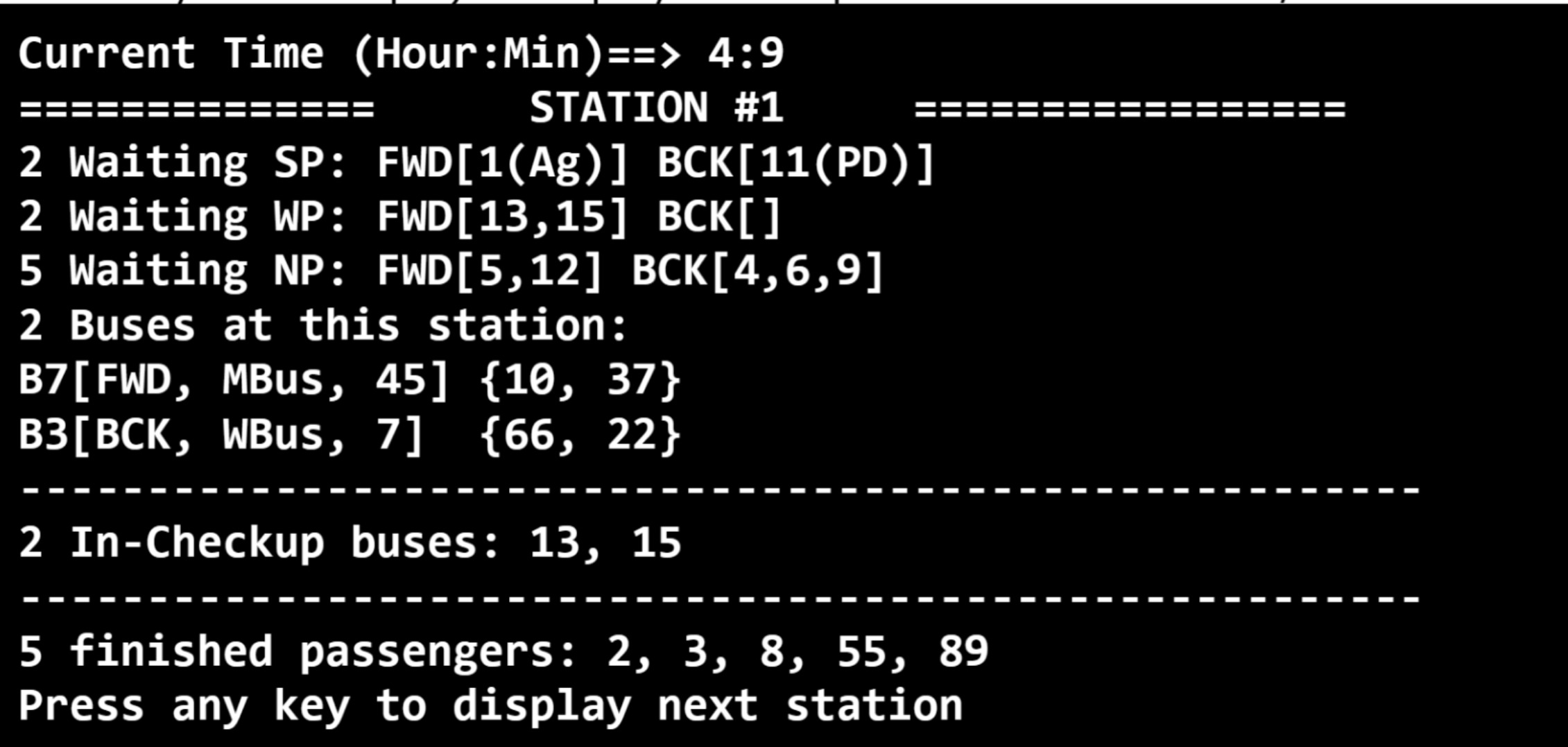The EasyTrip Bus Company Simulation project, undertaken as part of the Data Structures and Algorithms course at Cairo University, Faculty of Engineering, addresses the need for an automated bus assignment process to enhance the efficiency and profitability of passenger transportation. The system simulates the entire transportation operation, taking into account crucial factors such as passenger types, bus types, stations, and working hours. The overarching objective is to develop a comprehensive program capable of calculating statistics to optimize and refine the transportation process.
By the end of this project, the student should be able to:
- Understand unstructured, natural language problem descriptions and derive an appropriate design.
- Intuitively modularize a design into independent components and divide these components among team members.
- Build and use data structures to implement the proposed design.
- Write a complete object-oriented C++ program that performs a non-trivial task.
- Time is represented in hh:mm format.
- The simulation operates for one full day, from 00:00 to 23:59.
Passengers:
- Arrival Time: Time when the passenger arrives at the station.
- Passenger’s start and end stations.
- Passenger Get ON/OFF Time: Time needed for a passenger to get on/off the bus.
- Passenger Type: Three types - SP (Special), WP (Wheelchair), NP (Normal).
Stations:
- The company serves S stations along the bus road, numbered from 1 to S.
- Buses move from station #1 to station #S (Forward direction) and back from #S to #1 (Backward direction).
- Bus maintenance takes place at station #0.
Buses:
- Two types of buses: WBus (Wheel-chair) and MBus (Mixed).
- Bus Capacity (BC): The number of passengers a bus can carry.
- Maintenance Time: After finishing J journeys, a bus must undergo maintenance.
- Company working hours are from 4:00 to 22:00.
- Passengers can only board buses during working hours.
- Buses move from station to station based on the direction.
- Passengers may leave the station if they wait for too long.
- Buses have specific boarding criteria for different passenger types.
- Checkup duration and bus speed are the same for all buses of the same type.
- The program receives information from an input file and produces an output file.
- Input file format includes details about stations, buses, capacities, checkup durations, and events.
- Output file includes information about passengers, their times, and various statistics.
- Successful Compilation: Must compile with zero errors.
- Object-Oriented Concepts: Modularity, maintainability, and class responsibilities.
- Data Structures & Algorithms: Justification for chosen data structures and algorithms.
- Interface Modes: Support both interactive and silent modes.
- Test Cases: Comprehensive test cases covering various scenarios.
- Coding Style: Elegance, consistency, and sufficiency of comments.
| Member Name | |
|---|---|
| Anas Alaa Mohamed | Anas.ibrahim03@eng-st.cu.edu.eg |
| Omar Ahmed Mohamed Ali | omar.ali033@eng-st.cu.edu.eg |
| Shehab Eldin Osama Ahmed | shehab.osama02@eng-st.cu.edu.eg |
| Mahamoud Mohamed Abdelfattah | mahmoud.elsayed032@eng-st.cu.edu.eg |




